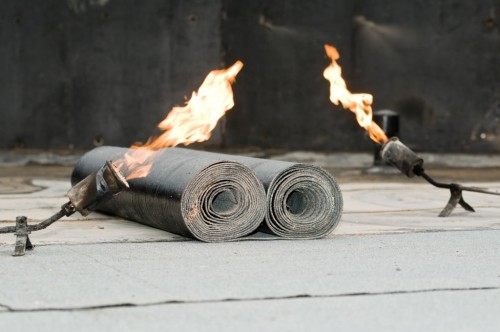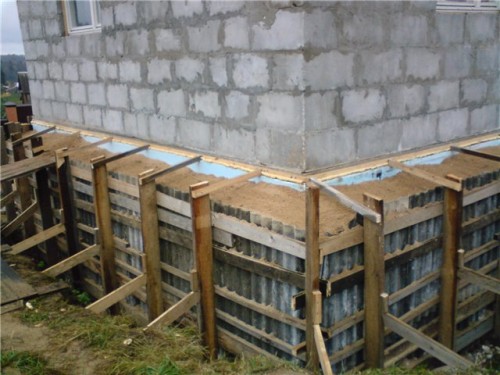
Waterproofing the foundation Ruberoid do it yourself Insulation

Protection of the foundation from moisture extends the service life of the building, prevents the formation of mold on the walls. One of the effective rolled materials used for waterproofing is runner.
Content
Benefits and disadvantages of material
The advantages of the runneroid in the following:
- has increased hydrogenity;
- waterproofing the foundation Ruberoid does not require significant material costs;
- long service life under the condition of protection against ultraviolet radiation;
- environmental Safety;
- easy installation.
Disadvantages of material:
- low elasticity;
- does not tolerate direct sunlight;
- firelessly.
Ruberoid types: What material should be used
Distinguish two types of rubberoid:
- lining;
- roofing.
The main material used in the manufacture, bitumen (may be oxidized or ordinary). The types of base material differ: production technology provides for the use of glass cholester or dense cardboard. The latter unstable to the effects of moisture. Glassball is characterized by mechanical strength, moisture resistance, but requires protection from the sun.
Ruberoid information is contained in marking:
- the first character - the letter "P" denotes the ruberoid;
- the second character "P" or "K" indicates the purpose of the runneroid - respectively, lining or roofing;
- the third symbol indicates the form of a subtype, which can be dusty or coarse-grained (also the letters "P" or "K");
- three subsequent numbers indicate a lot of 1 m cubic meters. Cardboard: The thicker basic mass will be greater.
Waterproofing the ribbon foundation Ruberoid is performed using the RKP-400 brand: it is a durable material that does not pass moisture. The second layer is stacked by the RKP-300 or RKP-350 - Ruberoid for waterproofing the foundation, the price of which is about half. The use of materials of different quality in the complex allows you to create reliable protection of the foundation.
Tip: It is not recommended to acquire a blind, old rubberoid. Such material is inclined to cracking, which will not be better affected by the quality and service life of waterproofing.
Vertical waterproofing foundation Ruberoid with their own hands: Phased instructions
Vertical waterproofing provides protection for the external and inner walls of the foundation and base - to prevent moisture penetration into the structure of the building material. On newly under construction objects, work is performed at the construction stage. For the repair of previously constructed buildings, it is first necessary to free the processed surfaces from the soil - pull out the trench along the perimeter of the foundation.
Further work is performed in three stages.
Surface preparation
- The walls are cleaned of dirt with water and a metal brush.
- All irregularities and cracks are eliminated by the cement mortar, which is applied after the primer.
- The protruding reinforcement should be cut down, sharp edges to clean up so that they do not damage the rolled material.
Laying Ruberoid
Operation is performed after a complete drying of the base walls.
- With the help of a car from a car or a wide coarse brush to the treated surface, a special cold bitumen mastic or a heated bitumen is applied. The first option is preferable from the point of view of security, but requires large material costs. When using a preheated bitumen, it is recommended to add 1/5 part of the spent engine oil to improve the adhesion and increase water-repellent properties.
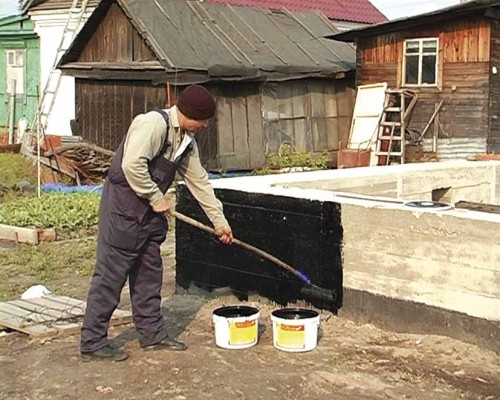
- Ruberoids are unwind and glued onto the wall. With this solder lamp, it is necessary to warm its back surface before the appearance of bitumen melts. The front side is pressed to the base of the roller, preventing the formation of air pockets. Unwind the roll in such a way as to ensure the nesting of neighboring sheets is not less than 100 mm.
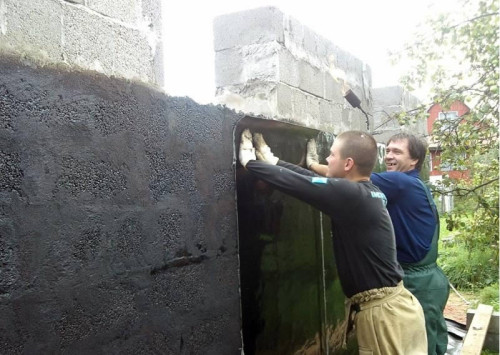
- Waterproofing the foundation Ruberoid (see the photo below) is performed in several methods. To ensure long-term protection of the walls of the base from moisture, it is necessary to stick 2-3 layers of the rubberoid. This is especially important for areas with a swampy terrain and a high level of groundwater.
- Completion: The inverse swelling of the foundation is carried out. At the same time, it is necessary to act carefully in order not to damage the runneroid. If necessary, the wall is closed with a shield material. Soil should be sealing.
Important: Waterproofing cannot be carried out during the rain and during the cold season. The moisture worsens the adhesive properties of bitumen, and at low temperatures it is possible to cracking the runneroid.
Horizontal waterproofing foundation Ruberoid
At this stage, the horizontal surface of the base is processed. This is necessary in order to prevent moisture penetration into the material of the building walls.
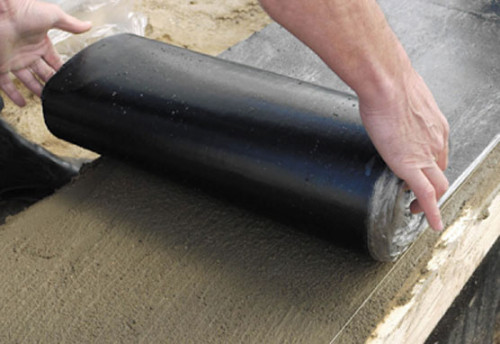
Work is performed before the construction of external bearing walls. The principal differences in the technology of waterproofing vertical and horizontal surfaces does not exist.
It must be remembered: the heating of bitumen in metal tanks is performed until the separation of air bubbles from the molten mass does not stop.
How else can you use runner for waterproofing
Bituminous mastic can be replaced with liquid rubber, the application of which also does not require heating. This material has the following advantages:
- improved (compared to bitumen mastic) water repellent properties;
- for the processing of the base, a smaller amount of material is required;
- does not require heating the back of the rubberoid;
- long service life.
Combining Ruberoid with a clay lock allows you to effectively protect building structures from groundwater. To do this, you need to do the following:
- The vertical waterproofing of the base is mounted using bitumen mastic and rubberoid according to the technology described above.
- Grease clay is prepared: soaked in water and warm up to obtain a homogeneous thick mass.
- Clay is applied on top of the rubberoid thick (3-4 cm or more) layer.
- The reverse swelling of the base is ground. This should be done before the surface of the clay will begin to dry. With a shortage of time, clay is slightly wetted to prevent cracking.
It is recommended to carry out the waterproofing of the foundation in the complex with the drainage system. This will increase the level of protection of the founding of the building, prevents the flooding of basement.
In the completion of the material on how the foundation of the foundation is carried out by rubberoid, video with explanations of the specialist.




